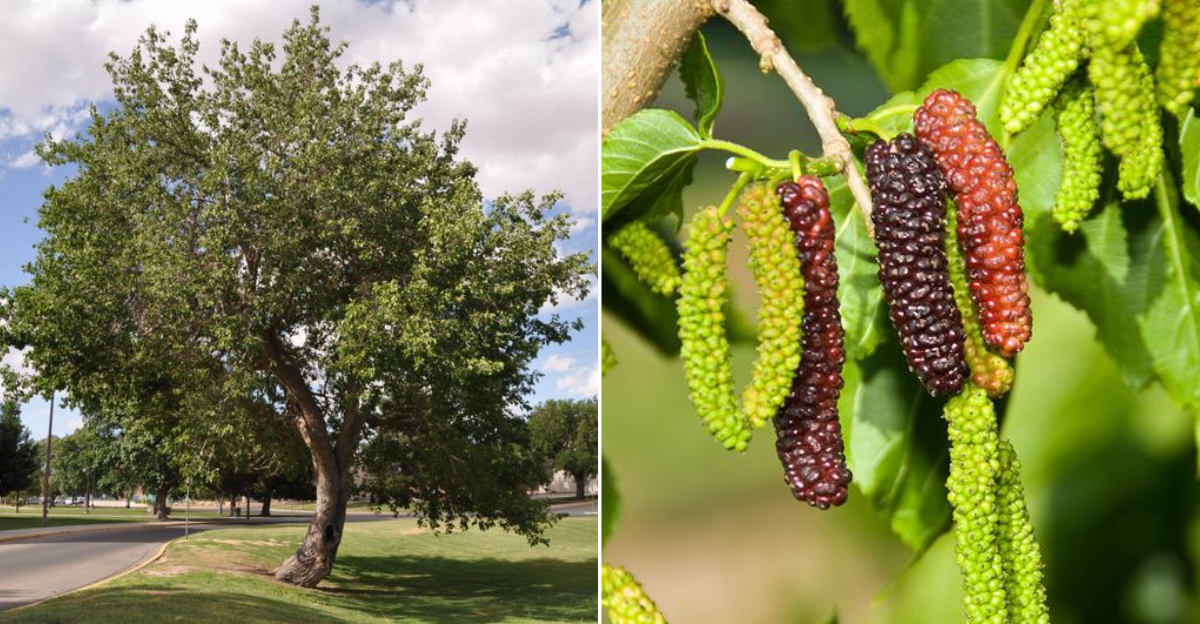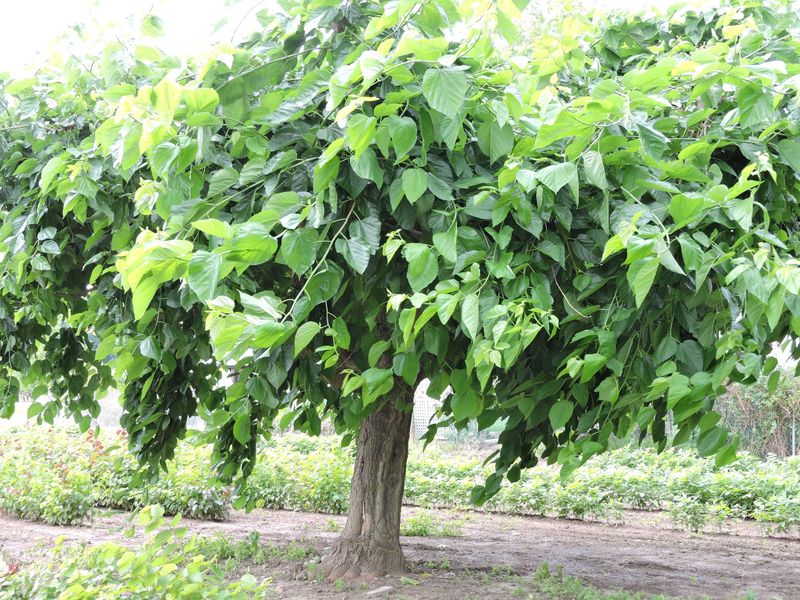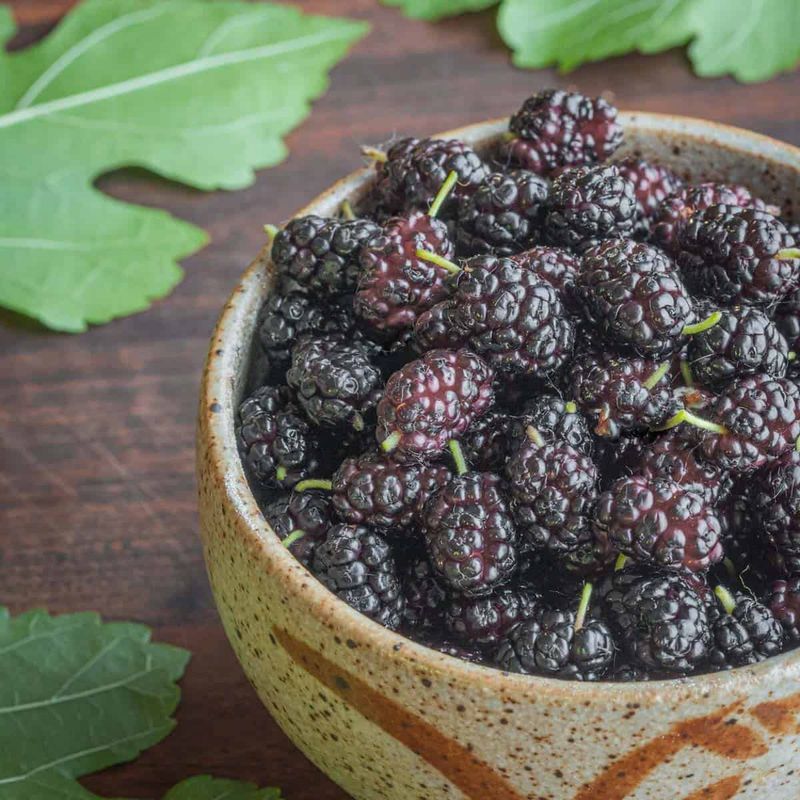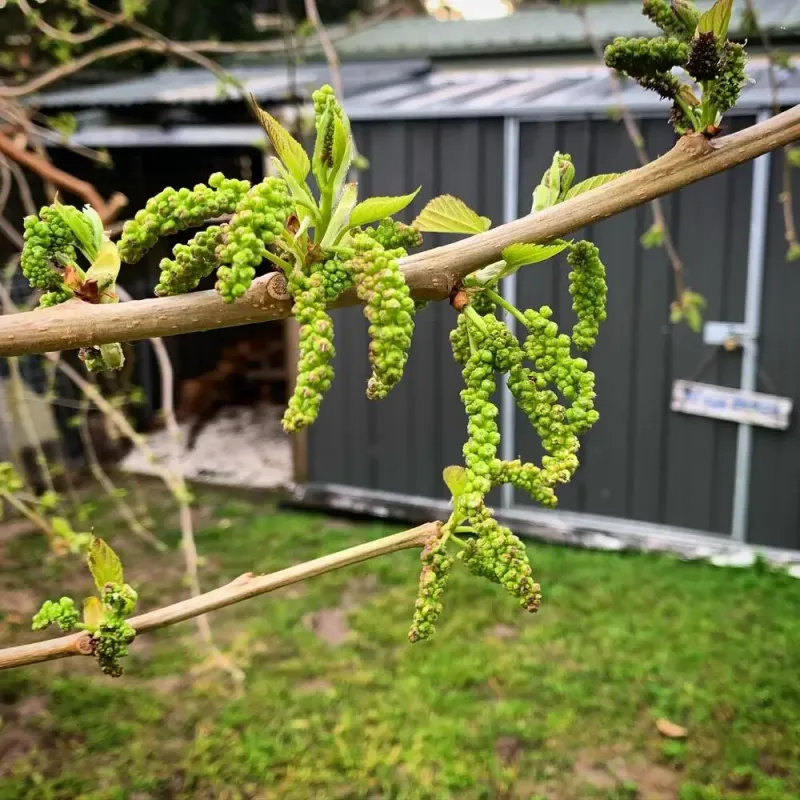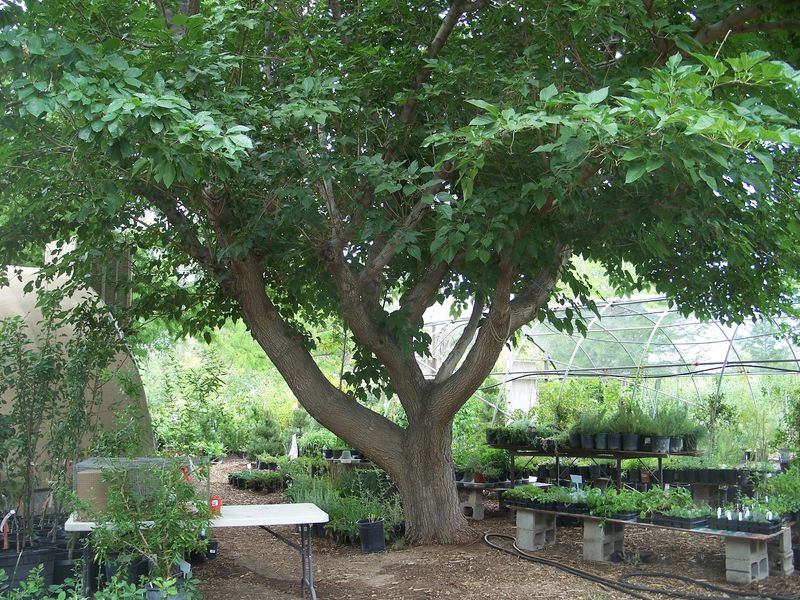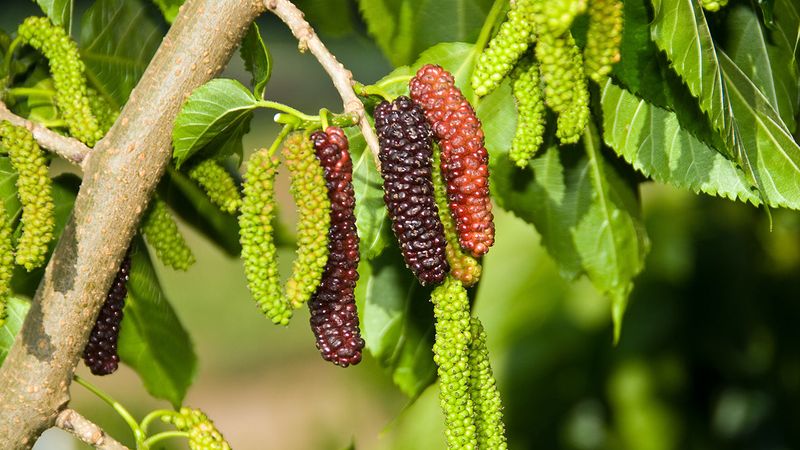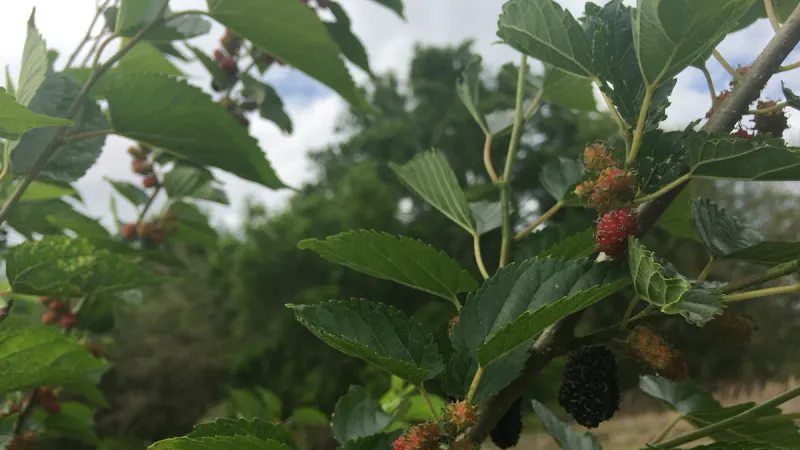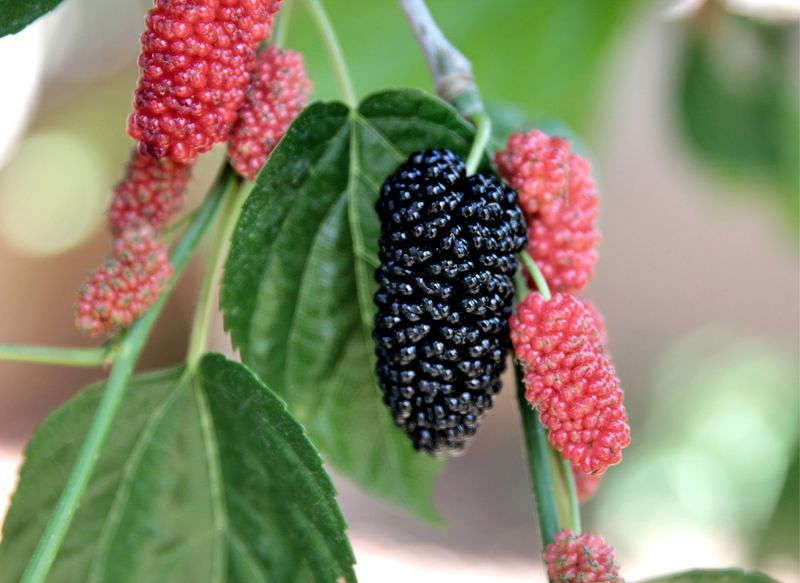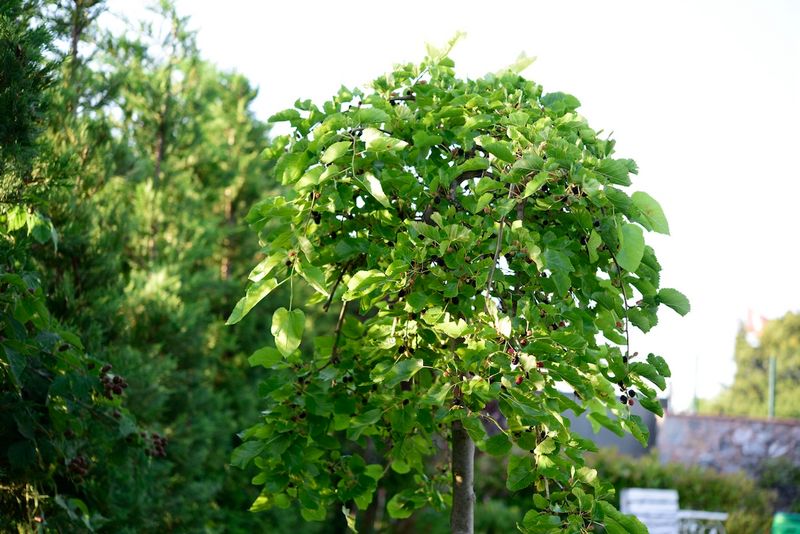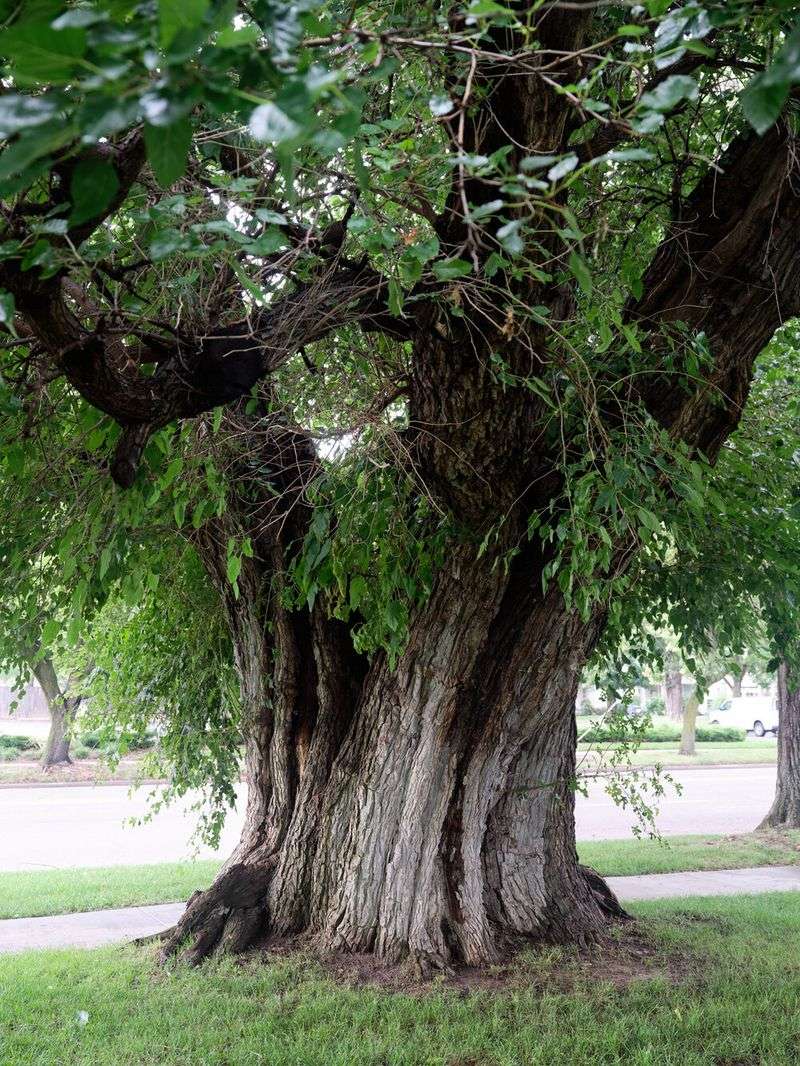Planting a mulberry tree in your garden or yard can offer numerous benefits that extend beyond its low maintenance requirements.
These trees serve as a delightful addition to any landscape, providing a habitat for wildlife, and yielding tasty fruits that are perfect for culinary exploration. Discover twelve compelling reasons to consider adding a mulberry tree to your green space.
1. Easy Maintenance
Mulberry trees are famous for their easy maintenance. They thrive in a variety of soil types and are drought-resistant once established, requiring little water to flourish. This makes them ideal for regions with water restrictions.
Mulberries also resist pests and diseases, sparing you the hassle of frequent treatments. Their robust nature means they can be left alone to grow without constant attention.
Furthermore, pruning is only necessary to remove dead branches or to shape the tree, allowing you to enjoy more time admiring your garden rather than tending to it incessantly.
2. Wildlife Attraction
Mulberry trees are a haven for wildlife, attracting a diverse array of birds and insects. Birds, in particular, are drawn to the trees’ sweet fruits, making your garden a lively bird-watching spot.
Additionally, the foliage provides excellent shelter for various bird species. Bees and butterflies are also attracted to the tree, aiding in the pollination of nearby plants.
This natural draw turns your garden into an ecological hotspot, fostering a biodiverse environment that supports various species while adding a dynamic atmosphere to your outdoor spaces.
3. Delicious Fruits
The fruits of the mulberry tree are a delightful treat. They have a unique, sweet flavor that can be enjoyed fresh or used in a variety of recipes. Whether you’re making jams, pies, or even mulberry wine, these fruits bring a distinctive taste to your culinary creations.
Rich in vitamins and antioxidants, mulberries are not just tasty but also nutritious. Their juicy, tender texture makes them an enjoyable snack straight from the tree, bringing a touch of nature’s sweetness to your daily diet.
4. Versatile Uses
Mulberries offer versatility in their uses, extending far beyond raw consumption. The fruits are perfect for making jams, jellies, and preserves, where their natural sweetness shines.
They can also be dried or frozen for long-term storage, ensuring you enjoy them throughout the year. In addition to culinary applications, mulberry leaves are a primary food source for silkworms, linking these trees to silk production.
This multifaceted use makes the mulberry tree a valuable addition to both your kitchen and the broader ecosystem, providing resources for various activities.
5. Shade Provider
Mulberry trees are excellent shade providers, making them perfect for gardens needing respite from the sun. Their broad, dense foliage forms a natural canopy, creating cool, shaded areas that offer relief during hot weather.
This feature not only provides comfort to people but also benefits understory plants that thrive in partial shade.
By strategically planting a mulberry tree, you can design your garden to include cozy, shaded spots ideal for relaxation or play. This adaptability in landscaping enhances the garden’s functionality and aesthetic appeal.
6. Fast Growth
Mulberry trees grow rapidly, making them an excellent choice for those eager to establish a garden quickly. Young trees can reach significant heights in just a few years, quickly transforming a sparse yard into a lush landscape.
This fast growth rate is particularly beneficial for new homeowners looking to create immediate privacy or shade. Despite their rapid development, mulberries maintain a manageable size, making them suitable for various garden settings.
Their ability to grow quickly without extensive care allows gardeners to enjoy a mature garden in a short timeframe.
7. Soil Erosion Control
The robust root system of mulberry trees makes them effective in controlling soil erosion. When planted on slopes or areas prone to erosion, their roots stabilize the soil and prevent loss.
This is particularly useful in regions with heavy rainfall or near water bodies where soil displacement is a concern. By planting mulberries, you can protect your landscape’s integrity and contribute to environmental conservation.
Their ability to hold soil in place supports sustainable land management practices and promotes a healthier ecosystem.
8. Adaptability
Mulberry trees are highly adaptable, thriving in diverse environments. Whether your garden is in an urban setting, a rural area, or a dry region, mulberries can adjust to different conditions with ease.
They tolerate various soil types, from sandy to clay, and can withstand both drought and occasional flooding. This resilience makes them an excellent choice for gardeners facing challenging conditions.
The ability to adapt ensures the tree’s survival and growth, providing consistent benefits regardless of changing climates or unexpected weather patterns.
9. Nutrient-Rich Fruits
Mulberries are packed with nutrients, offering numerous health benefits. They are rich in vitamins C and K, iron, and antioxidants, which support overall wellness. Including mulberries in your diet can enhance your immune system, improve digestion, and boost energy levels.
Their nutritional profile makes them a superfood that can complement a healthy lifestyle. Enjoying these fruits fresh or incorporated into meals not only delights the palate but also contributes to your nutritional intake, making them a valuable addition to any diet.
10. Aesthetic Appeal
Mulberry trees add aesthetic appeal to gardens and landscapes. Their lush green leaves and seasonal fruits create a striking visual contrast, enhancing the beauty of any outdoor space. In spring, some varieties also produce small, delicate flowers, adding to their charm.
Their elegant silhouette and changing hues across seasons provide a dynamic element to garden design. By planting a mulberry tree, you can elevate your garden’s visual appeal, making it a more attractive and inviting space for relaxation and enjoyment.
11. Pollinator Support
Mulberry trees support pollinators, playing a crucial role in ecological health. Their flowers attract bees and butterflies, essential for pollinating plants in your garden and surrounding areas.
By providing a food source for these pollinators, mulberries help maintain biodiversity and promote healthy ecosystems. This support is vital for the reproduction of many plants, contributing to the sustainability of your garden.
Encouraging pollinators by planting mulberries enriches your garden’s flora, fostering a thriving, vibrant environment that benefits both plants and wildlife.
12. Historical Significance
Mulberry trees hold historical significance in various cultures. They have been cultivated for thousands of years, initially prominent in Asia for silk production. The trees spread along trade routes, becoming a part of agricultural and cultural heritage worldwide.
Planting a mulberry connects you to this rich history, adding a sense of tradition and continuity to your garden.
Understanding their historical role enriches your appreciation for the tree, offering a deeper connection to cultural practices and natural history, making your garden more than just a visual delight.
